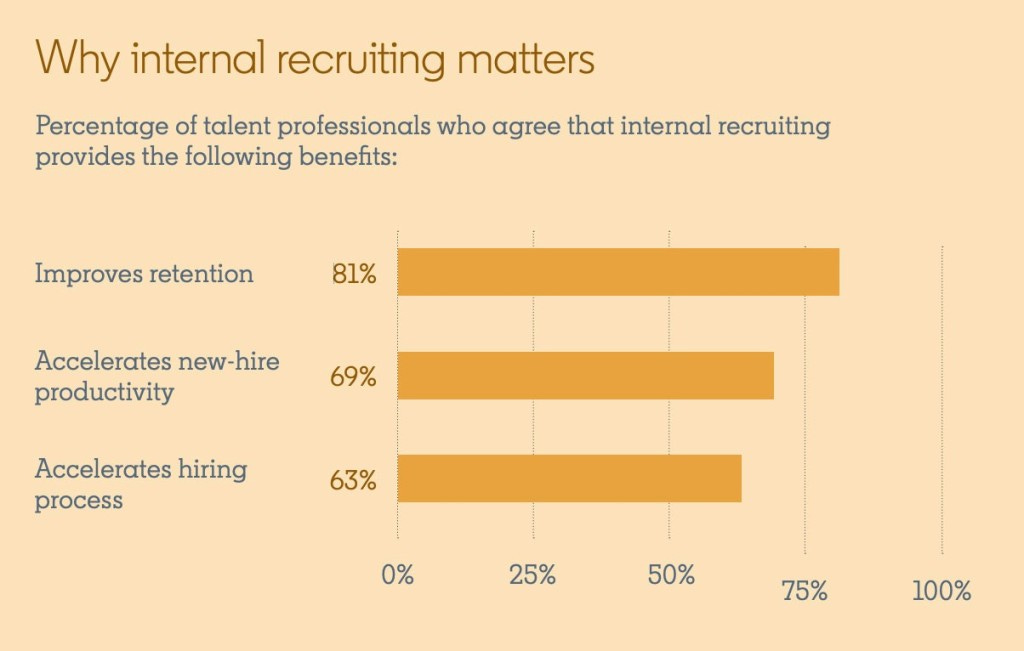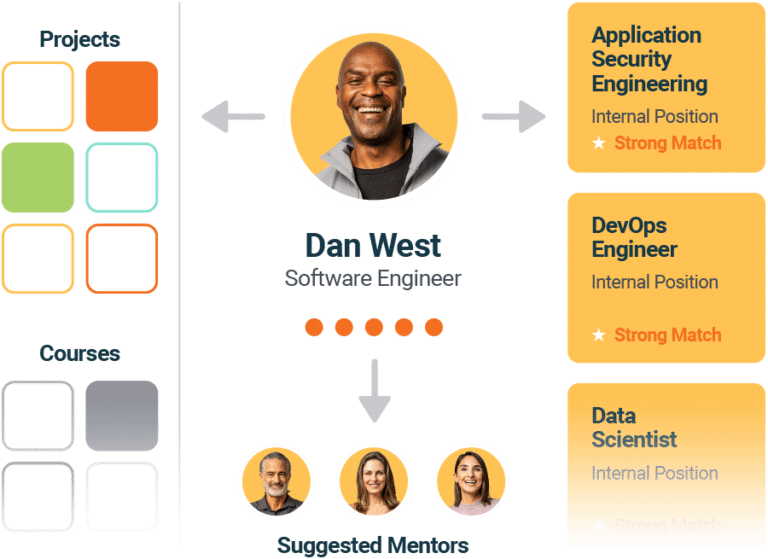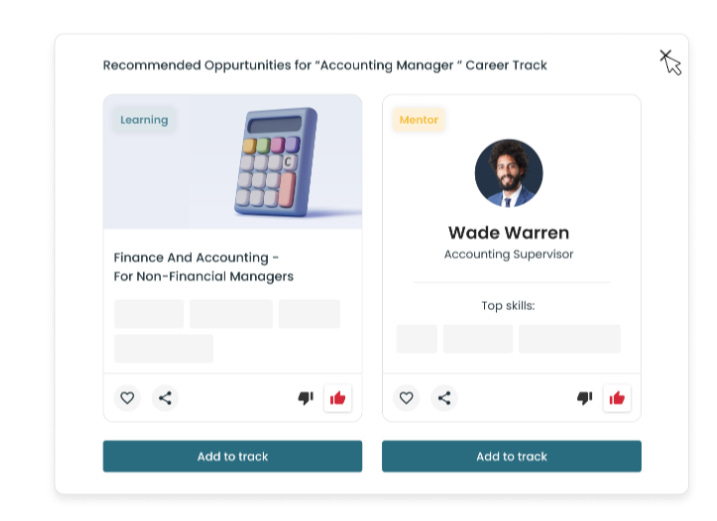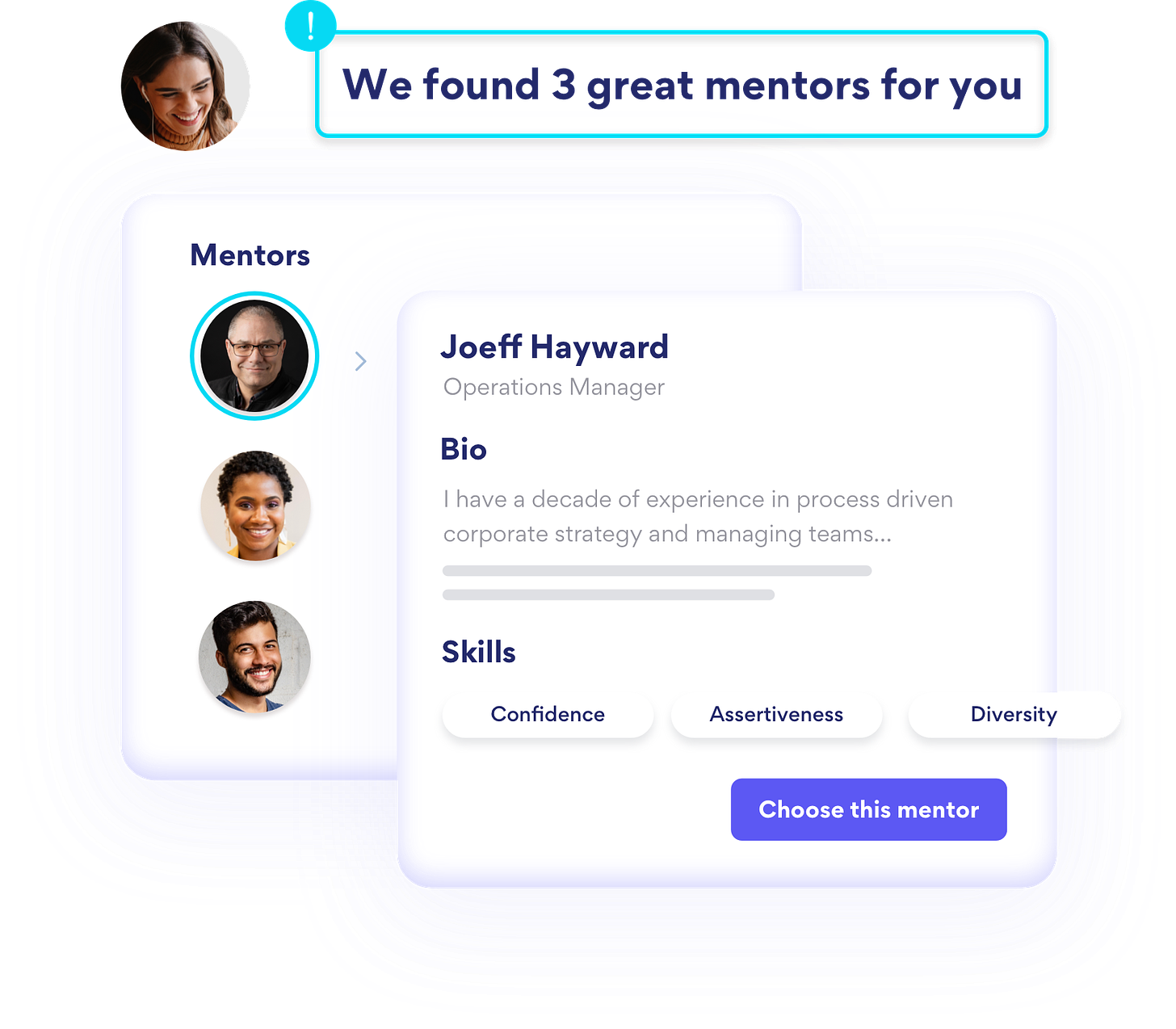To Retain Employees, Companies and Managers Should Make It Easier to Stay
What companies can do to improve retention through internal mobility and development
Welcome to this weekend’s newsletter. In this edition, we cover
Making Internal Mobility Work
Workplace and Career News
The Best Podcasts For Managers
Let’s dig in:
🚢#1)Making Internal Mobility Work🚢
During my last job, I was starting to hit a plateau in my role. I had been on the same team for three years and while I was still happy with the people and the work, I could feel myself stagnating. I started talking with other mentors and colleagues in the organization and found another open opportunity that seemed like a great fit. Because my manager and I were regularly having conversations about my personal and career development, I shared with her my interest in the opportunity.
She contacted a friend of hers who worked on the team to put in a good word, and helped me prepare for my interviews, which I ended up doing very well in. When I actually applied formally to the role, I was also paired up with an internal recruiter within the company. They got to know me, my background as well as my skill sets, and even recommended a few other roles and leaders I could talk to on an informal basis based on their knowledge of my background and skills.
While the role didn’t work out, I ended up staying on the team I was on, and having a conversation with my manager about new responsibilities and projects. Furthermore, the other leaders whom I had met in the process followed up with me to let me know they would keep their eyes open in case they heard of any other opportunities that might be a fit for me.
My manager also encouraged me to keep looking and let me know that if I found something else she would happily support me. I ended up staying for another year, making additional contributions to our team, and focusing on mentoring some of the junior members. While I did eventually leave, I was forever grateful to my manager, for her support through the process even if it meant that she might lose me. I also think she got some valuable contributions out of me to the team by restructuring my role and responsibilities.
In the end, the whole process, even if it didn’t work out, brought to light the power of creating structure, processes and programs around internal mobility and career engagement. And in today’s battle to attract and retain top talent, I think it’s an opportunity for companies to invest in if they want to keep their talent.
According to LinkedIn’s research, organizations with high internal mobility can retain employees for almost twice as long as those with low mobility.
Unfortunately, even companies with the best of intentions for retaining and engaging top talent, often fall short. According to research from Gloat, 73.9% of highly skilled workers feel there are better or more opportunities outside of their organization, and Gartner finds only 27% of job seekers agree that their organization makes it easy for them to find job opportunities.
And while some of this falls on people leaders and organizational and technology (or lack thereof) there is a process and mindset issue as well. Many managers, afraid of losing talent (commonly known as talent hoarding) don’t create an environment where it feels safe to want to look for another role. In some cases, they actively prevent it, for fear of losing good talent to other teams.
Companies that want to prioritize retaining top talent are implementing practices, protocoles, programs and processes around internal talent mobility. This is as much about filling roles and opportunities as it is about gaining a stronger relationship between companies and employees to understand insights into the talents and skills your employees have, and how they can be better used to drive value for the company and growth for the employee.
It’s hard to underestimate the role that technology plays in all of this, especially in companies that are of a large scale, but here are a few ways it can help:
Source: Eightfold AI
#1)Getting a View of Skills and Profiles
In order to show people where they can go, you need to know what you need ( what skills/roles will help us serve our customers) and what you have (what skills+capabilities do our employees currently have?) Internal Mobility Platforms like Eightfold AI, Reejig and Gloat allow companies to identify the top skills within their organization, and what employees have those skills. By enabling employee profiles, employees can not only see their skills and competencies, but also see profiles and career paths that profile self-reflection and awareness and allow for opportunities for further development and growth.
Source: Gloat
#2)Identifying and Implementing A Marketplace of Opportunities
With a good baseline understanding of the skills you have and the skills you want, companies can now make opportunities available that align to those skills through an internal marketplace, where internal employees can see what’s open and available.
Many of these platforms also provide some form of rating/matching algorithm so an employee can see based on a profile, how much of a fit they are for the role.
I intentionally put the word “opportunities,” because it is more expansive of a word than just “jobs” and reflects the fact that while a job or role could be an internal move, so could something like a project, or initiative.
This also reflects the fact that, these internal mobility platforms could also be used to manage external contractors or consultants, something some platforms like Eightfold AI actually do. Another great example of this comes from consulting firms like Deloitte and PWC, where external contractors can actually sign up for project or fractional work.
#3)Facilitating Connections and Fostering Relationships
While an internal job board can help visibility show opportunities, companies need to increase the access to these opportunities through the connection of people and relationships.
One way to do this is through mentoring.
Guider AI, is a full-scale mentoring platform that helps companies better connect employees internally to improve engagement, connection and employee retention. Using technology, Guider helps “guide” the end-to-end process of mentoring (connecting people, scheduling, taking notes, providing automated nudges, etc)
While technology can play a role in this, there are plenty of other resources to make this happen that have nothing to do with technology. Employee Resource Groups (ERG) are great ways to connect people of different parts of the company over shared interests. Many of which either will create mentoring programs or offer opportunities for professional development. For example, I’ve written previously about how a friend and colleague of mine found out about her next role through a speed networking virtual event last year. Prior to the event, she didn’t even know that team, role, or opportunity A) even existed, and B) was a thing the company did.
#4)Resources, Content and Upskilling to prepare for new roles and opportunities
Wanting a new role isn’t always enough. You actually need the skills to do it. Sometimes, there are open roles or opportunities, but people don’t have the skills to take them. Companies have responded by buying their employees licenses to products like Udemy, or LinkedIn learning, but to upskill at scale, these often don’t do enough. Other more invested companies will look to learning experience platforms like Degreed, which can often provide pathways and curated learning journeys to help employees not only understand the skills they need, but get content to get there.
Going one step further, is upskilling at scale. One company that is trying to solve for this is Pathstream, an upskilling and workforce development startup that works with companies and individuals to build learning programs+experiences (over a period of 6 months) to teach employees in-demand skills in technologies like Salesforce, Tableau, and Asana, and then provide them with support to actually take on those jobs. While Pathstream serves individual learners, it also has a B2B offering where it can provide employers who want to upskill or provide career pathways to their workers to take on new roles.
Finally, a thought to close - when employees want to leave or look around, one of the very first places they look to do this is to external platforms like LinkedIn, Glassdoor, and Payscale to better understand their prospects. I am sure these platforms have a treasure trove of data on what people would want out of their next internal role, and would be interested to see what they end up doing in this space.
Making internal mobility easier and more prevalent helps an organization not only improve retention, but shift the conversation around development and growth and empowers employees to think more expansively about how they can drive value and impact. Inevitably, employees will leave, but investing in both the technology, structures, and processes for internal mobility can create better outcomes in the short term for both employees and employers.
✅ 2)What’s New In The Workplace ✅
Article: Amazon Launches Udemy Competitor - Amazon, which has long had a relationship with higher education and learning more broadly has taken a step into the learning and course provider market. This looks so far in direct competition with course providers like Udemy, LinekdIn Learning, and Skillsoft. Right now, most of the courses look to be Amazon related, but given Amazon’s background in marketplaces I am sure it’s not long before course creators will be able to build and sell courses on their marketplace.
Article: Why We Will All Need Career Accelerators - I did a special midweek piece on the value of career accelerators, why we need them to continuously evolve our careers, and what companies can do to find the right career accelerators for their employees.
Podcast: 6 Trends For Learning In The New World of Work - A few weeks ago I had the pleasure of jumping on Andrew Barry’s podcast to talk about six trends of learning in the new world of work. If you’re interested in learning more about leadership development, manager training, and digital coaching, this is a good podcast to listen to.
Article: Gen Z Workers are Quiet Quitting - A new piece from WSJ report Lindsay Ellis which details and provides language to a new mindset for not taking your job too seriously which Lindsay is calling “Quiet quitting” that appears to be popular amongst Gen Z (but certainly other generations too) If you look on social media (TikTok, etc) you’ll find videos and content advocating and encouraging people to re-evaluate the role of their mindset towards work. Instead of trying to overextend, many advocate for doing the job you’ve signed up to do, and nothing more, and then using that other energy and time for other things that are important for you. To be sure, there’s a wide range of viewpoints on this as Lindsay points out, ranging from a more measured approach to career ambition (toning it down on hustle culture) to snarky jokes or critiques on capitalism. What’s interesting to me, is the framing of this - in that, the proponents of this term or phrase, consider “quiet quitting” to mean “doing your job.”
Article: Stop Offering Career Ladders, Start Offering Career Portfolios - This HBR piece, by April Rinne, advocates for companies and employees to think more expansively about career growth outside of just promotions. By considering a career portfolio, an individual can find more ways to fully actualize their identity and reach their potential (PS - I recently interviewed her on my podcast, excited to release this..)
➡️ 3) Resources: The Top Podcasts To Become a Better Manager⬅️
This week, I’m going deep on the top podcasts that are geared at helping managers become more effective and human-first managers. Here are a few of my favorites
Radical Candor (Kim Scott and Jason Rossoff) - Kim’s book Radical Candor was a huge hit in Silicon Valley and Beyond. In this podcast, she and Jason go deep on elements of radical candor, and how they apply to various tasks and responsibilities of managers
Building Better Managers (Better Manager) - Better Manager is a provider of Manager Training and in this podcast, they bring on guests to talk about best practices and tips for becoming an effective manager
SuperManagers (Aydin Mirzaee) - Aydin is an enthusiastic and thoughtful interviewer, and also the founder of a productivity and collaboration app Fellows. In this podcast, Aydin interviews leaders about tips and best practices for increasing trust and collaboration between managers and employees
The Modern Manager (Mamie Kanfer Stewart) - Marnie’s podcast covers quick tips for managers and interviews with guests on topics related to what it takes to succeed as a manager today.
That’s all for now, have a great week!
Al







